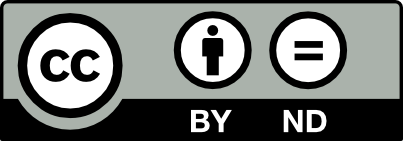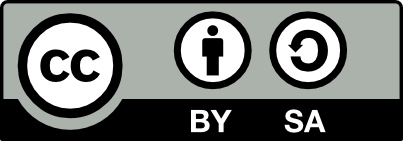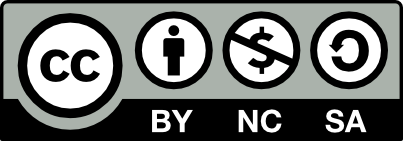- Why support Open Access?
- Does publishing Open Access require a cost?
- In which journals can I publish OA at no cost?
- Is it possible to receive a discount on the APC?
- Is it possible to publish Open Access at no cost?
- Creative Commons (CC) licenses
If you have any doubts, don’t hesitate to contact us!



Why support Open Access?
The University follows the Berlin Declaration and is committed to promoting open access to scholarly literature, including through its own publishing arm, the Tor Vergata University Press.
Supporting open access (OA) means ensuring for scientific products:
- the right to free, irrevocable and universal access;
- freedom for a range of uses (reproduction, distribution, etc.);
- the protection of intellectual authorship.
Publishing OA allows to:
- increase the visibility of the researcher and the institution;
- boost citation indexes;
- reduce the costs for accessing science.
For more information, we recommend visiting the website Why Open Research, which aims to raise awareness among researchers about various methods of Open Access.
Does publishing Open Access require a cost?
Some publishers require authors to pay a fee for publishing their articles in open access (OA), known as the Article Processing Charge (APC). These costs may be billed to the author, their institution, or, in some cases, covered by research grants or funds.
While publishing in open access may involve an initial cost, it’s essential to recognize that this fee is paid only once at the outset, benefiting the entire scientific community. In contrast, traditional subscription models require annual payments, limiting access to a select group of users.
Hybrid journals are traditional journals that offer the option of publishing open access for a fee known as an APC. These journals require a double payment:
- Payment of the APC for OA publication;
- Subscription fees to make all of their content accessible.
In which journals can I publish OA at no cost?
It is possible to publish open access (OA) at no additional cost thanks to transformative agreements. These contracts allow the subscription fees paid by institutions to cover both access to the journal and partially the costs associated with OA publication. As a result, the article processing charges (APCs) no longer fall on the authors but are instead covered by the institutions to which they belong.
These contracts with major international publishers are negotiated and managed on behalf of Italian universities by CARE-CRUI.
Below is a list of publishers for whom the University, through CARE-CRUI, has signed transformative agreements:
ACM (2022-2025)
Researchers associated with the University can publish unlimited open access articles in all hybrid and fully open access journals, as well as in conferences or proceedings included in the ACM Full-Text Collection.
Authors will be able to publish the following types of articles as open access:
1. Research articles
2. Review articles
3. Conference or proceedings papers
4. Short Papers
5. Technical Note / Note
6. Tutorial
7. Case Study
8. Interview
9. Survey
The publishing process is entirely managed by the publisher, who directly authorizes authors who submit their articles under the …@uniroma2 domain. For more information on the publication procedure, please refer to the attached file.
EMERALD (2020-2024)
Researchers affiliated with the University can publish open access – if vouchers are available – in all of the publisher’s hybrid journals. The CC BY 4.0 license must be adopted.
For more details about the publication procedure, please visit the dedicated page.
ELSEVIER (2023-2027)
Researchers associated with the University can publish open access (OA) in hybrid journals listed below at no extra cost. For further details on the publication procedure, please refer to the dedicated webpage.
⚠ NEWS: The two-year pilot project outlined in the contract, which covers publication without costs to the authors for so-called Gold Open Access journals, will conclude in 2024. Regarding this matter, CRUI announces that the latest offer received from Elsevier for 2025 does not align with the assessments made by the negotiating team, although the publisher’s willingness to continue future discussions is confirmed, provided that they are based on more solid and thorough foundations than those of recent months. Therefore, as of now, Gold OA journals are not included in the 2025 contract for OA publication without costs to the authors. Starting January 1, 2025, vouchers for publication in all hybrid journals will be UNLIMITED, and among the eligible article types, Short Communications will also be included.
IEEE (2025-2027)
The University has joined the 2025–2027 transformative agreement negotiated by CRUI-CARE with the publisher IEEE, which provides access to all contents of the IEL (IEEE Electronic Library) database and allows Open Access publication in IEEE’s Hybrid journals only, with a limited number of APCs, starting from articles accepted in the November–December 2025 period.
Researchers affiliated with the University may therefore publish Open Access – at no additional cost – in the journals listed below as Hybrid Open Access under the Open Access Type field.
During the submission process, it is necessary to use the institutional e-mail address. IEEE recommends the use of the CC BY 4.0 licence, while the CC BY-NC-ND licence will be allowed upon specific request.
For further information on the procedure, please refer to the dedicated page on the publisher’s website.
IOP Publishing (2022-2025)
Researchers from the University can publish open access at no extra cost in the journals listed below.
For additional details on the publication procedure, please visit the dedicated page.
LIPPINCOTT
Researchers at the University can publish open access at no extra cost in the journals listed at the following link.
For more details on the publication procedure, please visit the dedicated page.
SPRINGER (2020-2024)
Researchers at the University can publish open access at no extra cost in the journals listed here.
On the following page, you can find more information about the procedure to follow for publication.
⚠ NEWS The new Springer-Nature transformative agreement (2025–2029) has not yet been finalized, but an early implementation has been scheduled starting from July 1, 2025: only articles with an acceptance date on or after July 1 will be eligible for OA publication. Vouchers for publishing OA articles in Springer hybrid journals are once again available, although in a limited number.
Where the contract validity dates are indicated, they should be understood as running from January 1 to December 31. For APC cost coverage, the relevant date is the article submission date. Researchers affiliated with the University also include PhD students for the duration of their doctoral program.
The workflow for Open Access publishing under transformative contracts follows a recurring pattern (for more details, see the sections dedicated to individual publishers):
- When submitting the article, the corresponding author* must provide the necessary information to correctly identify their affiliation (university name and institutional email address) on the publisher’s dedicated platform. In the case of articles with multiple authors, only the corresponding author can be recognized as the affiliated author.
- After completing the peer review process, the corresponding author, upon being informed of the existence of a transformative contract signed by the University, enters the required data on the publisher’s platform.
- The University’s internal contact person, Dr. Paola Coppola, reviews and approves the open access publication request on the publisher’s platform.
The published article is licensed under a Creative Commons CC-BY or another Creative Commons license, with the authors retaining the rights to the publication.
*The corresponding author is the researcher affiliated with the University who is authorized to act on behalf of all co-authors regarding the publication. They serve as the primary point of contact for any requests from the publisher, both before and after the article’s publication.
Is a discount on APC possible?
Some publishers offer the possibility of signing agreements that provide discounts on APCs, such as the contract signed by the Engineering Area Library with the publisher MDPI (05/01/2024–04/30/2025), which grants a 10% reduction in APC costs for all authors affiliated with the University. The cost is covered by the author. For more details on the publication procedure, please refer to the dedicated page.
Is it possible to publish Open Access at no cost?
Yes! Authors and researchers have multiple opportunities to publish their work Open Access at no additional cost!
1. Istitutional repository (Green Road)
An institutional repository is a platform where members of an institution store and share documents produced through their research activities.
The institutional repository of Tor Vergata (ART – Anagrafe della Ricerca Tor Vergata) allows authors to deposit a full-text copy of their work and make it accessible via Open Access (OA). To make the full text OA, the author must specify the permitted uses of their work by selecting one of the Creative Commons (CC) licenses.
If the document you wish to deposit is an article that has already been submitted or published in a journal, it is advisable to check the publisher’s policies on the matter. Many publishers allow the OA deposit of the final published version in an institutional repository after a possible embargo period. If the publisher does not permit the deposit of the final version, the author can check whether they allow the deposit of earlier versions of the work:
- Preprints/Submitted version: the scientific article that has not yet been published or approved by a peer review board;
- Postprint/Author’s accepted manuscript: the version of the article after peer review, but without the final editorial layout (e.g., page numbering, pricing, logos, and copyright);
- Postprint editorial version/Version of record: the PDF copy of the published version of the article.
To learn about editorial policies, we recommend consulting the Sherpa Services website or the list created by the Polytechnic University of Turin.
It should be noted that even if an author has already signed a rights assignment agreement, they can request the publisher to add a clause (Addendum) to the contract to reserve certain rights of exploitation of their work (such as deposit in a repository) that would otherwise belong to the publisher. For more information, please refer to the SPARC – Scholarly Publishing and Academic Resources Coalition page.
For any questions, please contact us. For specific information about ART, please refer to the relevant section of the website.
2. Open access journals (Gold Road)
Authors can choose to publish directly in journals that offer freely available and downloadable content (open access journals). To verify the legitimacy of an open access journal, several tools can be used:
- Directory of Open Access Journals (DOAJ): a directory of open access scientific journals curated by DOAJ, an independent, non-profit organization. It establishes criteria for journal inclusion in the repository and supports a community of reviewers who ensure compliance with formal and quality standards;
- Open Access Scholarly Publishers Association (OASPA): a non-profit association representing the interests of open access journal publishers worldwide in scientific, technical, and academic disciplines. Members participating in the initiative must meet specific criteria, providing a tool to certify the quality of their open access journals;
- Think – Check – Submit: an interdisciplinary initiative that includes representatives from DOAJ and OASPA among its members. It has developed an evaluation framework to help researchers assess the reliability of a scientific publisher;
- Compass to Publish: a tool developed by the University Library of Liège that helps assess the legitimacy of open access journals by answering a series of questions.
3. Joining a public funding program
It is important to note that for projects funded with public funds (Italian or European), publishing the results in open access is often a requirement for accessing the funds.
For the Horizon Europe project (2021-2027), immediate and public access must be ensured through one of the following methods:
- Publication on the ORE – Open Research Europe platform;
- Publication in open access (non-hybrid) journals;
- Publication in traditional journals, while retaining the rights to deposit and provide immediate access.
For more information, it is recommended to carefully consult the institutional websites related to the funding projects of interest.
Creative Commons (CC) licenses
By using a CC license, the author specifies which rights they waive and which they make available to others. There are six types of CC licenses, each progressively more restrictive on permitted uses, all of which ensure the protection of authorship. Any of the licenses listed below can be used to publish the full text on ART. For more information, please refer to the official Creative Commons website.
CC BY 4.0 (Attribution)
The author allows sharing and adaptation of their work, including for commercial purposes, as long as they are clearly attributed as the original creator.
CC BY-NC 4.0 (Attribution, NoCommercial)
The author allows sharing and adaptation of their work only for non-commercial purposes. Attribution of the work is mandatory.
CC BY-ND 4.0 (Attribution, NoDerivatives)
The author allows sharing (for any purpose, including commercial) but does not permit adaptation of their work. Attribution of the work is required.
CC BY-SA 4.0 (Attribution, ShareAlike)
The author requires that derivative works be distributed under the same license as the original. Attribution of the work is mandatory.
CC BY-NC-SA 4.0 (Attribution, NoCommercial, ShareAlike)
The author allows only non-commercial reuse that retains the same license as the original. Attribution of the work is mandatory.
 UNIVERSITA' DEGLI STUDI ROMA "TOR VERGATA"
UNIVERSITA' DEGLI STUDI ROMA "TOR VERGATA"



